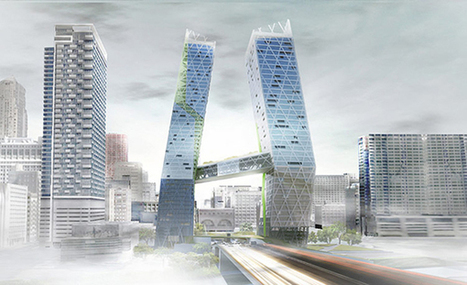A new breed of high-rise architecture is in the process of being born, thanks to the collaborative efforts of modern design pioneers. Envisioned as the best sustainable option for meeting world housing demands and decreasing global carbon emissions, wooden mega-structures are now one step closer to becoming a reality.
“Big Wood,” a conceptual project to the eVolo 2013 Skyscraper Competition, builds on the premise that wood, when harvested responsibly, is one of the best tools architects and engineers have for reducing greenhouse gas emissions and creating healthy communities. Aspiring to become one of the greenest skyscrapers in the world, Big Wood challenges the way we build our cities and promotes timber as a reliable platform to support tomorrow’s office and residential towers...
Via Lauren Moss



 Your new post is loading...
Your new post is loading...











The Case For Tall Wood Michael Green Architecture
I find this hard to truly picture, but the story is solid...."the last century there has been no reason to challenge steel and concrete as the essential structural materials of large buildings. Climate change now demands that we do.....Wood is the most significant building material we use today that is grown by the sun. When harvested responsibly, wood is arguably one of the best tools architects and engineers have for reducing greenhouse gas emissions and storing carbon in our buildings."
“I’d put my money on solar energy…I hope we don’t have to wait till oil and coal run out before we tackle that.”
~Thomas Edison, In conversation with Henry Ford and Harvey Firestone March 1931
http://mg-architecture.ca/portfolio/tallwood/
“Known as the birthplace of the skyscraper, Chicago is an optimal location for a prototype in mass timber construction,” writes Carlos Arzate
Fascinating place. Must of been a lot of wood to be created.